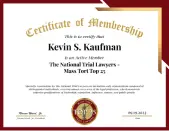Any type of truck accident is dangerous. Commercial trucks such as transport trailers can weigh up to 80,000 pounds when they are fully loaded. Even when they are not carrying cargo, they can still weigh up to 40,000 pounds. When these large and heavy trucks collide with smaller vehicles, it is usually the occupants of the smaller vehicles that suffer the most harm. While any truck accident can cause severe injuries, underride accidents are particularly dangerous. Below, our West Virginia truck accident lawyer explains what these accidents are and why they are so dangerous.
What are Underride Truck Accidents?
An underride truck accident occurs when a small vehicle slides underneath the trailer or body of a large commercial truck. Transport trailers sit much higher off the road than the average passenger vehicle. As such, their bumpers are not aligned with standard vehicles. These trucks also have raised side frames and high tires that have large gaps in them. The design of transport trailers causes underride accidents in several ways.
Rear underride accidents are the most common. These types of accidents happen when smaller vehicles crash into the back of a truck and, during the impact, become trapped underneath the truck. These crashes can occur when a smaller vehicle is following a truck too closely or when a truck driver slows down or stops abruptly and the smaller vehicle following it does not have time to stop and avoid a crash.
Defective taillights on a truck also cause many underride accidents. Other motorists can also cause underride accidents when they are distracted and do not notice a larger truck in front of them.
Side underride accidents can also occur. These accidents happen when a car hits the side of a transport-trailer and is wedged below the truck. These accidents can occur if a truck driver makes a U-turn or at intersections. If a truck merges onto a road and the driver fails to see a smaller vehicle already in the lane, a side underride accident can also occur.
Front underride accidents are the third type of crashes. These accidents happen when a truck moves over a smaller vehicle. This can happen when a truck driver fails to keep a safe distance behind a smaller vehicle and then does not have time to stop when the vehicle in front of them slows down. Truck drivers also face many distractions on the road, including eating and drinking, using their cell phones, and adjusting the systems within their vehicles. When a truck driver takes their eyes off the road, they may not see a smaller vehicle in front of them until it is too late.
The Danger of Car Under Truck Accidents
Occupants of smaller vehicles will often suffer catastrophic injuries during an underride accident.
The roof of the vehicle will collapse as it is wedged underneath the truck, causing traumatic brain injuries, serious head injuries, and neck injuries. Spinal cord injuries, including paralysis, are also common. In extreme cases, decapitation has also been known to happen. This is most common when the smaller vehicle is traveling at a high speed. Airbags also often do not deploy during an underride accident because the impact happens at the level of the windshield.
Truck drivers sit very high above the road, so they often walk away from underride accidents uninjured.
However, for occupants in smaller vehicles, these types of crashes are often fatal.
What are the Requirements for Safety Guards on Tractor-Trailers?
Due to the fact that underride accidents are so dangerous, the U.S. Department of Transportation has placed strict requirements on underride guards on transport trucks. Although this requirement went into effect in 1998, it only applies to the back of trucks. The sides and front of trucks are not required to be equipped with these guards.
There are certain types of trucks that are not required to comply with these rules. These include single-unit trucks where the cargo area and the cab are not separated, such as courier trucks. Dump trucks, large box trucks, garbage trucks, and certain trucks with tires far in the rear are also exempt.
Unfortunately, multiple studies have shown that rear underride guards sometimes do not protect from underride accidents. To ensure they are more effective, the National Highway Traffic Safety Administration (NHTSA) has adopted Canada’s underride guard rule, as these offer more protection.
Many newer models of transport trucks in the United States have already upgraded their underride guards but older models are also still traveling throughout the country every day.
Who is Liable for Underride Accidents?
Determining liability for compensation in a truck underride accident can become complex. In rear-end accidents, the rear driver is usually considered negligent. In other cases, the truck driver or the trucking company may be to blame. The most common liable parties in underride crashes are as follows:
- The truck driver, if they acted negligently by speeding, following another vehicle too closely, or otherwise breaking the law
- The trucking company, if they failed to ensure that their vehicles were properly equipped with underride guards
- Maintenance companies, if they failed to correct underride guards or tail lights on tractor-trailers
- Manufacturers, if they released defective truck parts
- Drivers of passenger vehicles if they acted recklessly or negligently
Because underride accidents are often fatal, determining liability is even more complex. While loved ones can file a wrongful death claim if someone else caused the death of their family member, they often do not know who is liable because they were not at the scene of the crash.
Our Truck Accident Lawyers in West Virginia Can Determine Liability
If you or someone you love has been hurt in an underride accident, you need sound legal advice. At Kaufman & McPherson, our West Virginia truck accident lawyers can investigate your crash, determine who is liable, and help you obtain the full and fair settlement you are entitled to. Contact us to schedule a free review of your case and to get the legal help you need.








